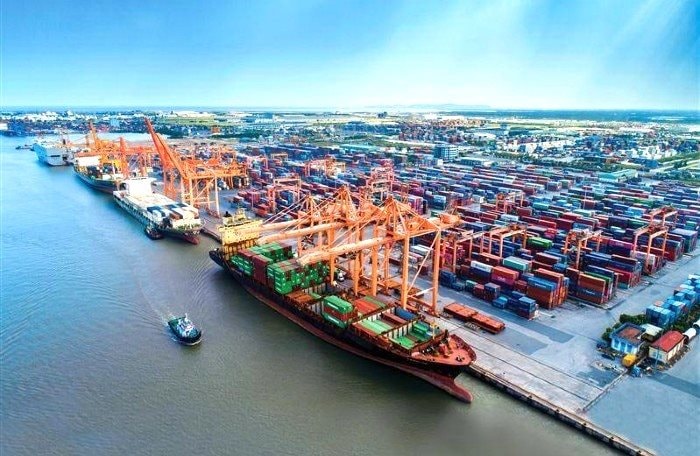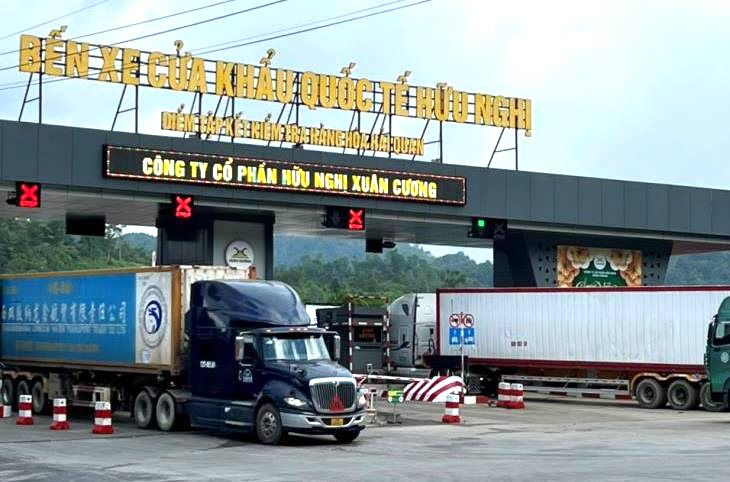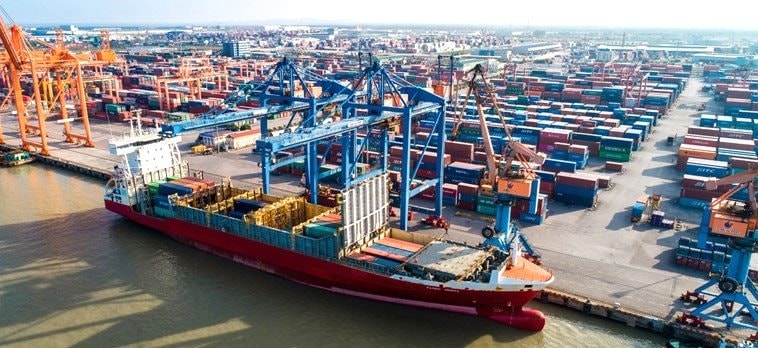Northern Vietnam’s Logistics Infrastructure: What Opportunities from the China-Vietnam Economic Corridor?
English - Ngày đăng : 08:01, 12/10/2024

This article will analyze the strengths, limitations, and development opportunities for the logistics systems in these provinces, providing insights into the future of the region.
Geographical Advantages of Northern Provinces
The northern region of Vietnam, particularly the provinces of Hai Phong, Quang Ninh, and Lang Son, boasts exceptional geographical advantages. These provinces lie along the China-Vietnam economic corridor, one of the key trade routes connecting Vietnam with one of the world's largest economies.
Hai Phong is the northern gateway to the sea, hosting Vietnam’s second-largest seaport system, after Ho Chi Minh City. Hai Phong not only benefits from its maritime routes but also connects well with road and rail networks, facilitating import and export activities.
Quang Ninh, located adjacent to the Chinese border, serves as a critical trade bridge between the two countries. This province is actively developing its seaport system, notably Cai Lan Port, and special economic zones to attract foreign investment.
Lang Son is a key border gate along the northern frontier, with major checkpoints like Huu Nghi and Tan Thanh. Lang Son plays a crucial role as a transit point for goods flowing between China and Vietnam, further boosting trade between the two nations.

Road and Seaport Infrastructure Development
Transportation infrastructure is one of the core factors for logistics development, and northern provinces are gradually upgrading and expanding their road and seaport networks.
Road infrastructure has seen significant improvements. Expressways such as Hanoi-Hai Phong, Hanoi-Lang Son, and Quang Ninh-Mong Cai have been or are being completed, reducing travel time and lowering transportation costs. This helps Vietnam’s economic zones quickly connect with China and neighboring provinces.
The seaports of Hai Phong and Quang Ninh are major highlights. The Lach Huyen Port in Hai Phong is a modern deep-water port capable of accommodating large container ships, playing a pivotal role in exporting goods to international markets. Meanwhile, Quang Ninh's Cai Lan Port is also rapidly developing, particularly in bulk cargo and container transportation.
However, the connection between coastal ports and inland industrial zones and logistics hubs still requires improvement to enhance efficiency.
Limitations to Address
Despite these advantages, logistics infrastructure in the northern provinces still faces several limitations.
Uneven infrastructure quality: Although expressways are being completed, many local road segments still do not meet transportation demands. At border checkpoints like those in Lang Son, infrastructure is still insufficient to handle peak export seasons, especially for agricultural products.
Seaport infrastructure: While ports in Hai Phong and Quang Ninh are modern, further upgrades are needed to keep up with the increasing demand for cargo handling. Currently, Hai Phong faces issues with its navigation channels and a lack of synchronized logistics services, hindering the smooth and rapid flow of goods.
High logistics costs: A major issue for export-import businesses is that logistics costs remain high due to the lack of synchronization across road, maritime, and warehousing systems. This reduces the competitiveness of domestic companies compared to those in other countries in the region.
Opportunities from the China-Vietnam Economic Corridor
Vietnam and China are strengthening economic cooperation through their bilateral economic corridor. Government support policies from both sides, coupled with the robust development of border economic zones, offer significant opportunities for northern provinces to attract investment in logistics.

Strengthening international cooperation: Vietnam can leverage free trade agreements (FTAs) with China and other countries to boost the flow of goods, especially through border checkpoints and seaports. Maximizing tariff incentives from these agreements will help enhance exports and attract foreign investment.
Development of industrial and special economic zones: Special economic zones in Quang Ninh and Lang Son are attracting numerous investment incentives, providing favorable conditions for the development of logistics centers, warehousing, and supporting services. This helps create stronger links between production, transportation, and distribution, driving the region's economic growth.
Technology applications in logistics: In the context of the Fourth Industrial Revolution, applying technology to logistics management is essential. Technological solutions such as smart warehouse management systems, GPS-based transportation tracking, and automated cargo handling will improve the operational efficiency of logistics in northern provinces.
Northern Vietnam is facing a significant opportunity to develop its logistics infrastructure, thanks to its strategic location and the China-Vietnam economic corridor. However, to truly become a leading logistics hub in the region, these provinces must continue investing in transportation and seaport infrastructure, improving logistics service quality, and reducing transportation costs.
Strengthening international cooperation, attracting investment in special economic zones, and applying technology will be key to overcoming current challenges. With a well-thought-out development strategy, northern Vietnam can rise to become an essential link in the global supply chain, contributing to the sustainable growth of Vietnam's economy.
